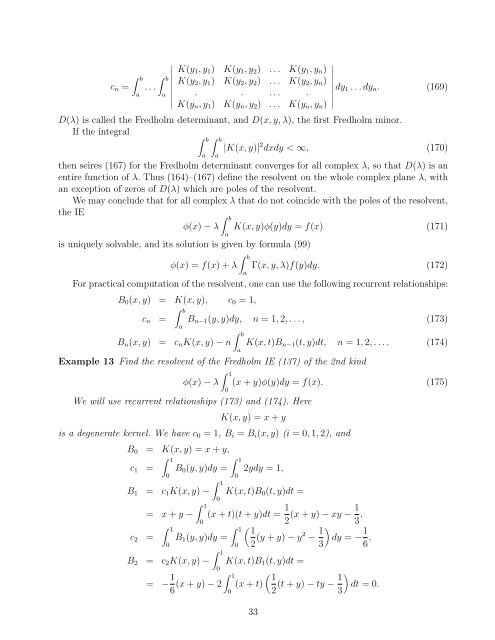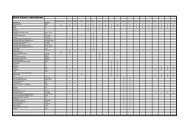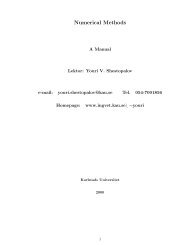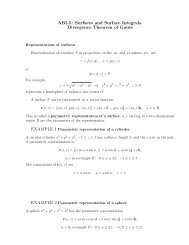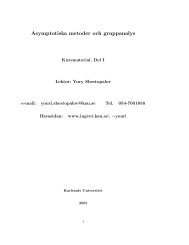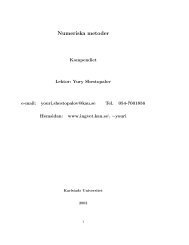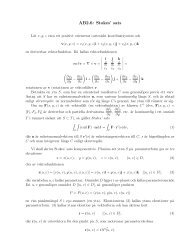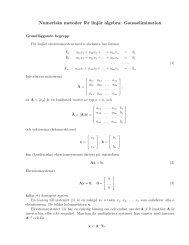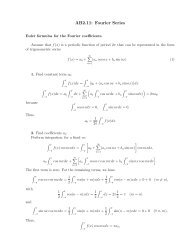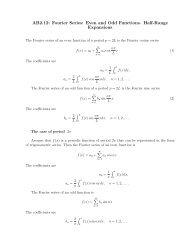Create successful ePaper yourself
Turn your PDF publications into a flip-book with our unique Google optimized e-Paper software.
∫ bc n = . . .a∫ ba∣K(y 1 , y 1 ) K(y 1 , y 2 ) . . . K(y 1 , y n )K(y 2 , y 1 ) K(y 2 , y 2 ) . . . K(y 2 , y n ). . . . . .K(y n , y 1 ) K(y n , y 2 ) . . . K(y n , y n )dy 1 . . . dy n . (169)∣D(λ) is called the Fredholm determinant, and D(x, y, λ), the first Fredholm minor.If the integral∫ b ∫ baa|K(x, y)| 2 dxdy < ∞, (170)then seires (167) for the Fredholm determinant converges for all complex λ, so that D(λ) is anentire function of λ. Thus (164)–(167) define the resolvent on the whole complex plane λ, withan exception of zeros of D(λ) which are poles of the resolvent.We may conclude that for all complex λ that do not coincide with the poles of the resolvent,the IE∫ bφ(x) − λ K(x, y)φ(y)dy = f(x) (171)ais uniquely solvable, and its solution is given by formula (99)φ(x) = f(x) + λ∫ baΓ(x, y, λ)f(y)dy. (172)For practical computation of the resolvent, one can use the following recurrent relationships:B 0 (x, y) = K(x, y), c 0 = 1,c n =∫ bB n (x, y) = c n K(x, y) − naB n−1 (y, y)dy, n = 1, 2, . . . , (173)∫ baK(x, t)B n−1 (t, y)dt, n = 1, 2, . . . . (174)Example 13 Find the resolvent of the Fredholm IE (137) of the 2nd kindφ(x) − λWe will use recurrent relationships (173) and (174). Here∫ 10(x + y)φ(y)dy = f(x). (175)K(x, y) = x + yis a degenerate kernel. We have c 0 = 1, B i = B i (x, y) (i = 0, 1, 2), andB 0 = K(x, y) = x + y,c 1 =∫ 10B 0 (y, y)dy =B 1 = c 1 K(x, y) −∫ 1∫ 10∫ 102ydy = 1,K(x, t)B 0 (t, y)dt == x + y − (x + t)(t + y)dt = 102 (x + y) − xy − 1 3 ,∫ 1∫ 1 ( 1c 2 = B 1 (y, y)dy =2 (y + y) − y2 − 1 dy = −3)1 6 ,0∫ 10B 2 = c 2 K(x, y) − K(x, t)B 1 (t, y)dt =0= − 1 ∫ 1 ( 16 (x + y) − 2 (x + t)2 (t + y) − ty − 1 dt = 0.3)033


